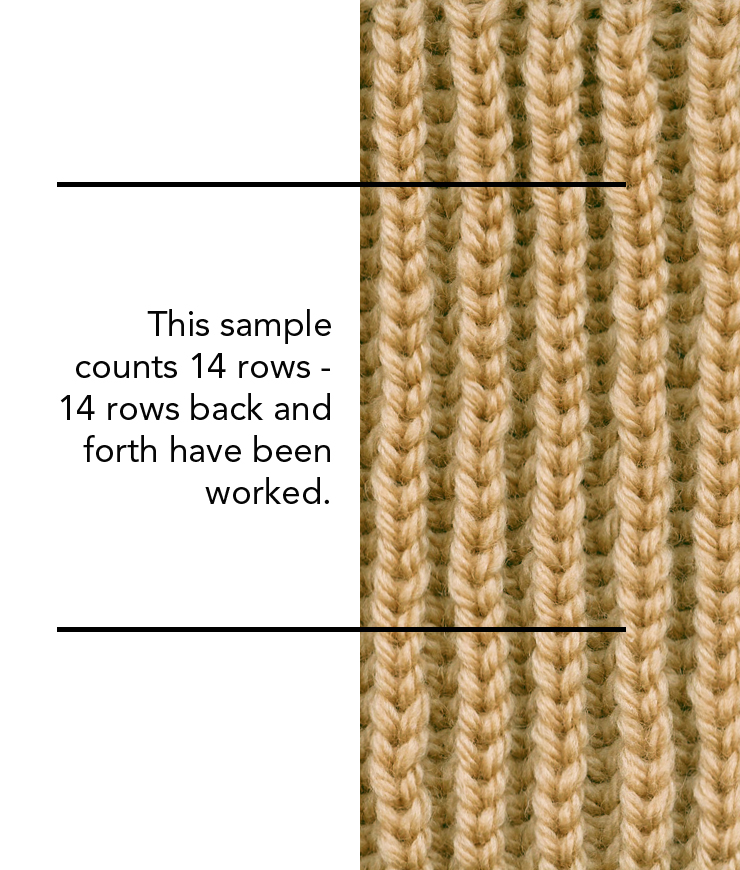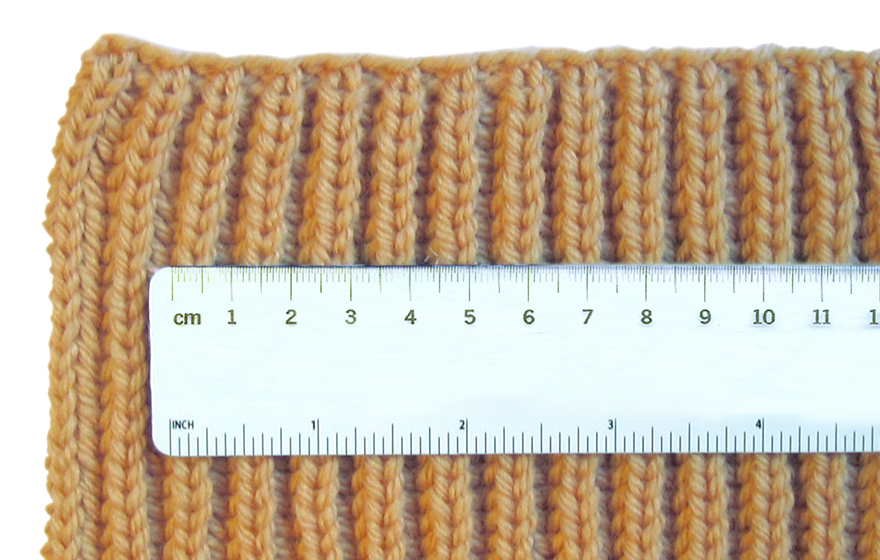Counting Gauge
Because the brioche stitch creates such a lofty fabric, it is advisable to go down a needle size or two when making brioche.
Measuring a brioche sample for gauge is tricky because of its elasticity. The larger the sample, of course, the more secure your measurements will be. Brioche knitting creates a compressed fabric compared to normal stockinette. If a yarn measures 24 sts x 32 rows for 4 in/10cm in stockinette, it will be more like 16 sts x 40 rows in brioche.
You have the choice to either block your sample or not, depending on whether you plan on blocking the finished garment. If your yarn is slippery, it would be best to ‘hang’ your sample for a few days to see if it will elongate.
Lay the sample on a flat surface and measure in the middle of the sample with a flat ruler. Don’t push down with the ruler or your count will be off. Count across your stitches and measure as accurately as you can.
When counting rows, count the knit stitches going up a knit column on the RS. When the pattern says “10 rows” you should count 10 knit column stitches when actually worked back and forth 10 times. Two worked rows = One counted row.



